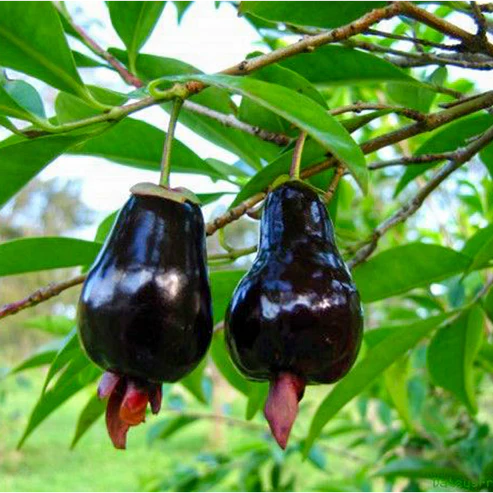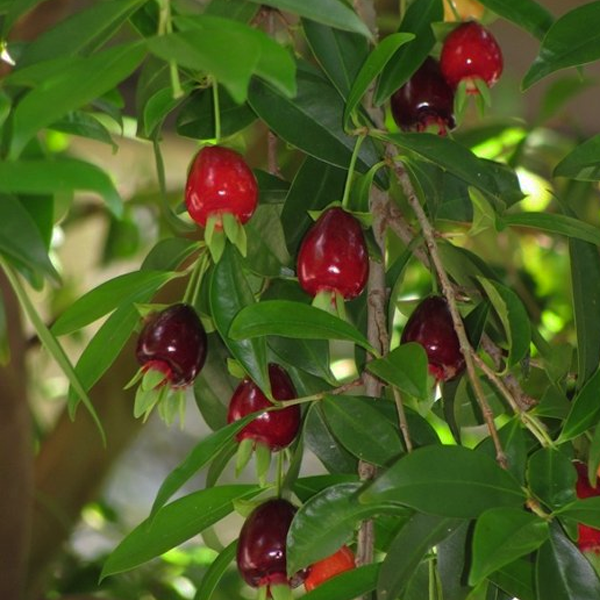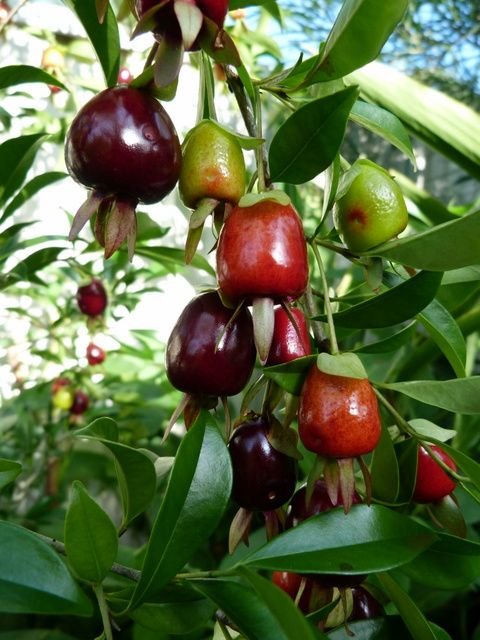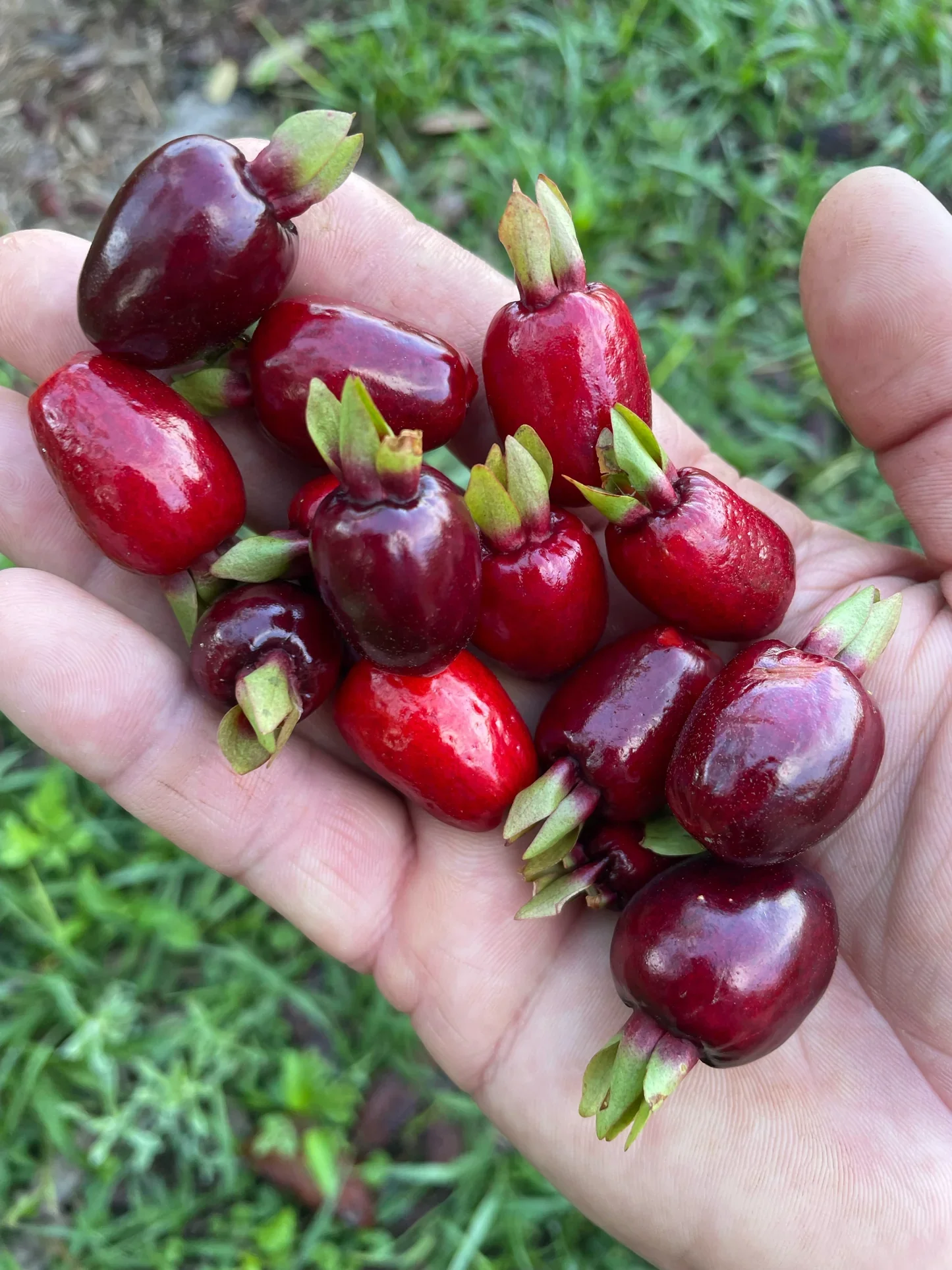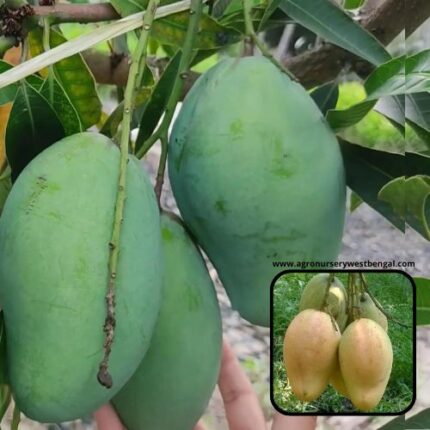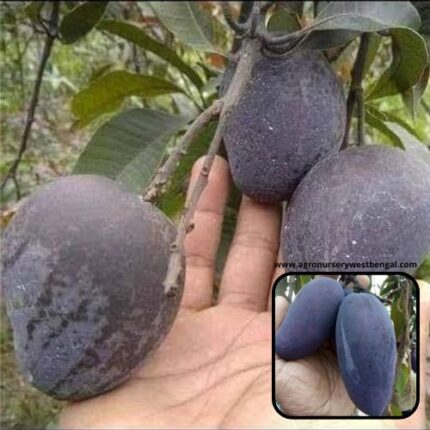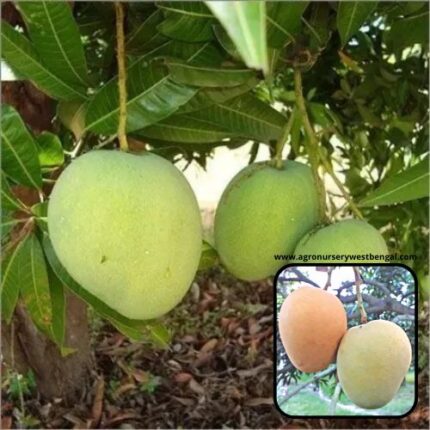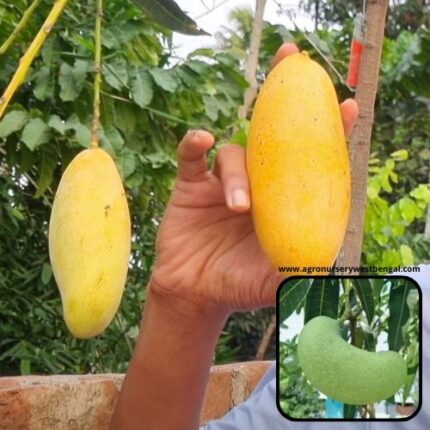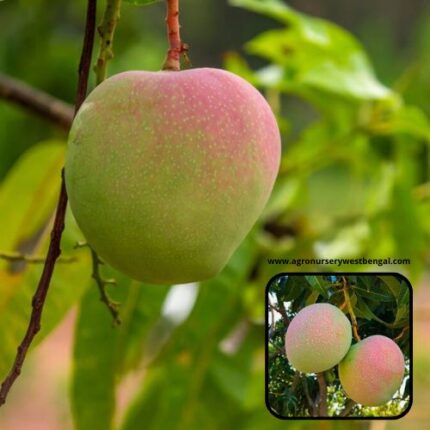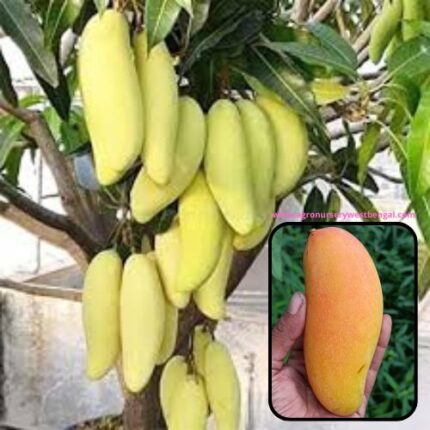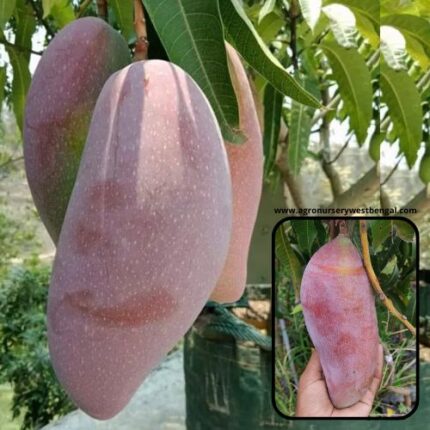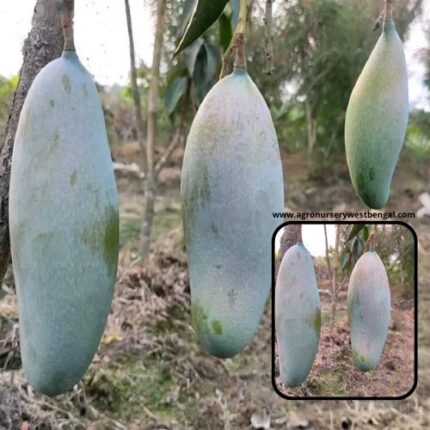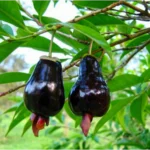
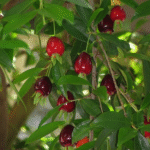
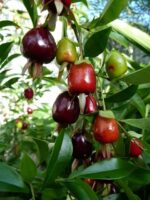
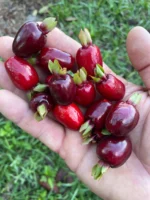

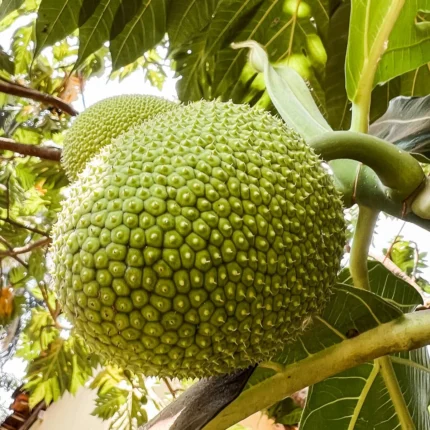
Rio Grand Cherry fruit plant
₹3,599 Original price was: ₹3,599.₹2,699Current price is: ₹2,699.
The Rio Grande Cherry is a delightful tropical fruit with the scientific name Eugenia involucrata. It belongs to the Myrtaceae family, which also includes other well-known fruits like guavas, jaboticaba, and Surinam cherries. Native to Brazil, particularly the southern regions, it’s gaining popularity in other warm climates for its attractive appearance and delicious, cherry-like fruit.
Here’s a detailed description of the Rio Grande Cherry fruit:
Appearance:
- Shape and Size: The fruits are typically small, round to oblong or obovate (egg-shaped with the wider end at the top). They usually measure about 1 to 2.5 cm (0.4 to 1 inch) in diameter, similar in size to a common tart cherry.
- Skin: The skin is thin, smooth, and glossy. It ripens from green to a vibrant dark red or deep purple color when fully mature.
- Flesh: The edible flesh is juicy, translucent, and a lighter reddish color, often described as soft and tender. It completely surrounds one to two small, white, rounded seeds.
- Persistent Calyx: A distinguishing feature is the persistent green calyx (the sepals of the flower) that remains at the apex (bottom) of the fruit, giving it a neat, finished look.
Taste and Texture:
- Flavor Profile: The taste is the main draw for many. It’s often described as being remarkably similar to a traditional northern cherry, but with a unique tropical twist. It offers a pleasant balance of sweetness and a mild, refreshing tartness. Some people detect subtle hints of plum, and a few even suggest a faint banana undertone, especially in certain varieties.
- Texture: The flesh is juicy and tender, with a pleasing bite. It’s not overly fibrous, making it enjoyable to eat fresh.
Tree and Growing Conditions:
- Tree/Shrub: The Rio Grande Cherry plant is an attractive evergreen shrub or small tree, typically growing 3-6 meters (10-20 feet) tall, though it can reach up to 9 meters (30 feet) in ideal conditions. It has a compact, upright, and heavily branched habit.
- Leaves: The foliage is very appealing, consisting of glossy, dark green, narrow elliptic leaves that are 6-8 cm (2.5-3 inches) long.
- Flowers: Showy, solitary white flowers with prominent stamens appear in the leaf axils, typically in early spring (March to May in Florida). These blossoms are often fragrant.
- Climate: It thrives in subtropical to tropical climates. While it prefers warm conditions, mature plants are surprisingly cold-hardy for a tropical fruit, tolerating temperatures down to about -7°C (20°F) once established. Younger plants require frost protection. It can adapt to a variety of soil types but prefers slightly acidic, well-drained soil.
- Fruiting: Fruit production can begin as early as 3-5 years from planting, ripening about three weeks after blooming. The fruiting season is typically in late spring to early summer (April to June in the northern hemisphere).
Uses and Nutritional Value:
- Fresh Consumption: The Rio Grande Cherry is primarily enjoyed fresh, right off the bush, due to its delicious taste and appealing texture.
- Culinary Uses: Its flavor makes it excellent for use in:
- Jellies, jams, and preserves
- Juices and smoothies
- Desserts (pies, tarts, ice cream toppings)
- It also freezes well, allowing for enjoyment out of season.
- Ornamental Value: Beyond its fruit, the tree is highly valued as an ornamental plant due to its attractive glossy foliage, pretty white flowers, and colorful fruit. It can be grown as a specimen tree, a hedge, or even in containers.
- Nutritional Benefits: Like many fruits in the Eugenia genus, the Rio Grande Cherry is considered a good source of:
- Vitamins: Especially Vitamin A and Vitamin C.
- Antioxidants: Contains beneficial compounds that help combat oxidative stress.
- Minerals: Contains small amounts of iron, magnesium, and potassium.
- Dietary Fiber: Contributes to digestive health.
Overall, the Rio Grande Cherry is an excellent choice for home growers in suitable climates who desire a cherry-like fruit with robust growth and ornamental appeal

